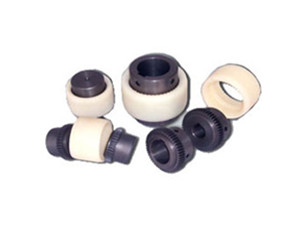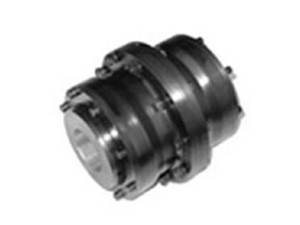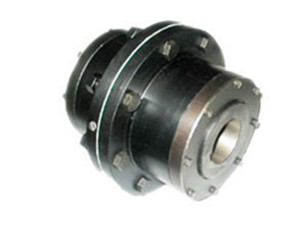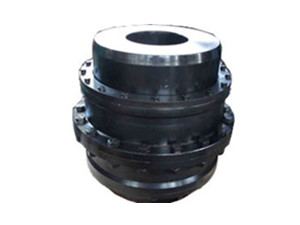Structural features of pin coupling
The pin coupling relies on the locking force of the pin group to generate the frictional moment on the contact surface, and compress the rubber elastic sleeve to transmit the torque.It is suitable for small and medium-power shafting transmissions with good rigidity of the installation base, high centering accuracy, low impact load and low vibration reduction requirements.The work of the elastic sleeve is compressed and deformed. Because the thickness of the elastic sleeve is thin, the volume is small, and the elastic deformation is limited, the pin coupling can compensate the axis displacement and elasticity, but the allowable compensation amount for the axis displacement is less, and the elasticity is more. weak.The pin coupling has a relatively simple structure, easy to manufacture, no lubrication, no need to bond with metal vulcanization, easy to replace the elastic sleeve, no need to move the half coupling, and has a certain degree of compensation for the relative offset of the two shafts and damping and buffering performance.
The heat treatment and machining requirements of the elastic pin WGT drum gear coupling: heat treatment after forging: the forging should be pre-heated after forging to improve the structure and workability.Rough machining: Rough machining should be carried out before heat treatment of forging properties, leaving a small machining allowance.Performance heat treatment: Forgings should be quenched and tempered to achieve the required performance.Machining after performance heat treatment: After the mechanical properties are qualified, the forging is processed to the size and surface roughness specified by the drawing provided by the buyer.Couplings allow double length forging, generally should be separated heat treatment.When the coupling pin hole is heated, the workpiece is exposed to the air, and oxidation and decarburization often occur (that is, the carbon content of the surface of the steel part is reduced), which has a very adverse effect on the surface performance of the parts after heat treatment.Therefore, metals should usually be heated in a controlled atmosphere or protective atmosphere, molten salt, and vacuum, and coatings or packaging methods can also be used for protection and heating.
The heating temperature is one of the important process parameters of the heat treatment process. The selection and control of the heating temperature is the main issue to ensure the quality of the heat treatment.The heating temperature varies with the metal material being processed and the purpose of the heat treatment, but it is generally heated above the phase transition temperature to obtain a high-temperature structure.In addition, the transformation requires a certain time. Therefore, when the surface of the metal workpiece reaches the required heating temperature, it must be maintained at this temperature for a certain period of time to make the internal and external temperatures consistent and complete the microstructure transformation. This period of time is called the holding time.When high-energy density heating and surface heat treatment are used, the heating speed is fast and there is generally no holding time, while the holding time of chemical heat treatment is often longer.
relevant information
- Function of coupling
- Treatment method and lubrication of gear coupling failure
- The reason why plum coupling is often damaged
- The difference between star coupling and plum coupling
- The structure and advantages of JQ type clamp coupling
- How to install and connect the coupling
- Installation technology of drum gear coupling
- The keyway type and code of the shaft hole of the diaphragm coupling
Ranking of similar articles
- Function of coupling
- Treatment method and lubrication of gear coupling failure
- The reason why plum coupling is often damaged
- The difference between star coupling and plum coupling
- The structure and advantages of JQ type clamp coupling
- How to install and connect the coupling
- Installation technology of drum gear coupling
- The keyway type and code of the shaft hole of the diaphragm coupling
- Specifications and parameters of plum coupling
- Advantages of elastic pin coupling





